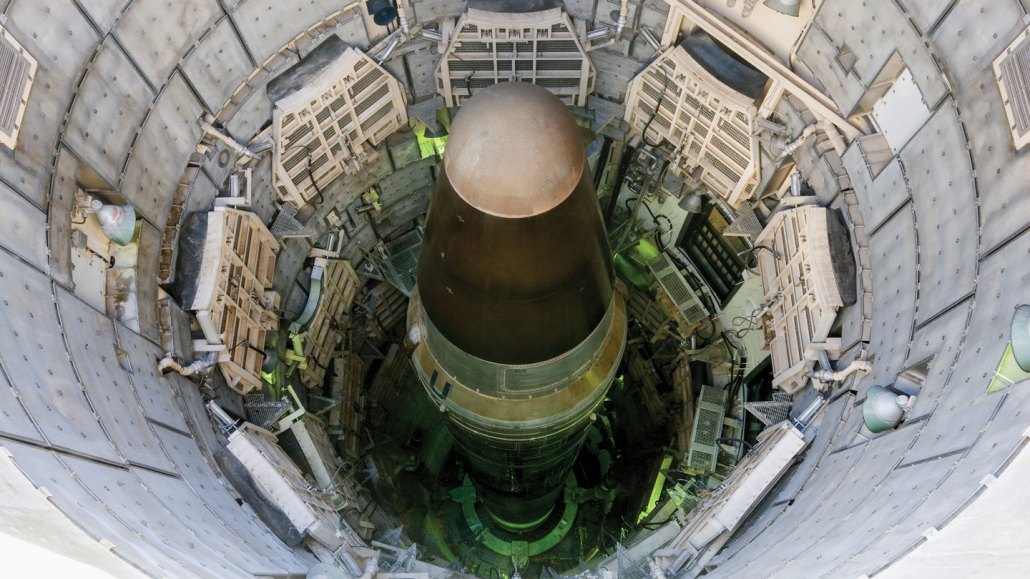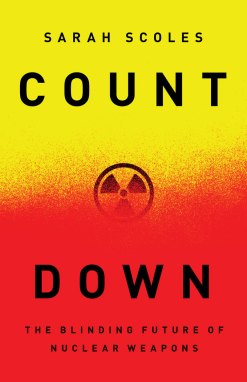
The United States is working to modernize its aging nuclear weapons, such as the nuclear intercontinental ballistic missile (shown).
Michael Dunning/The Image Bank/Getty Images

Countdown
Sarah Scoles
Bold Type Books, $30
The United States is on a mission to modernize its aging nuclear weapons stockpile. And physicists have feelings about it — and the future of nuclear weapons more broadly.
In Countdown, science writer Sarah Scoles dredges up all the feels in interviews with physicists at the national laboratories dedicated to maintaining the U.S. nuclear stockpile and with researchers, activists and others who orbit that lab system. The researchers grapple with the legacy of their field’s most infamous invention and their roles as stewards of the planet’s most destructive weapons (SN: 8/6/20).
To work on nuclear weapons, Scoles’ conversations reveal, is to embrace seemingly contradictory ideas. The weapons promote peace by deterring countries from attacking each other, but the weapons also make possible the destruction of civilization. The researchers see their work — on a variety of topics, from computer simulations of nuclear weapons to nonproliferation research — as necessary and even find beauty in it, but some also dream of a world without these bombs.
The United States has not tested nuclear weapons since the 1990s, when it signed the Comprehensive Nuclear-Test-Ban Treaty (SN: 4/8/21). To maintain confidence in its roughly 3,700 nuclear weapons, the country aims to replace the steadily degrading nuclear material at their hearts. These bowling ball–sized pits are hollow spheres of plutonium that kick off the nuclear explosion when a bomb detonates. Currently, the United States is stuck with its aging pits, but by 2030, the plan is to produce 80 pits per year.
Yet some activists oppose the pit production and other modernization efforts — the details of which are classified and thus unknown to the public. While proponents see updating the weapons as essential to shore up the deterrent, others think the deterrent is effective as is and worry modernizing could kick off a dangerous arms race.
Countdown also delves into the history and culture of the national labs focused on nuclear work. While some of it seems like inside baseball — this or that management change — there is serious tea spilled. One scientist says Los Alamos “is in a 1950s bubble,” lamenting the lab’s seeming focus on the “cult of genius” — the outdated model in which a lone researcher transforms a field. And Scoles recounts drama from decades prior, of employees at Los Alamos National Laboratory in New Mexico and Lawrence Livermore National Laboratory in California rebelling against management the best way they knew how: angry blog posts and at least one snarky limerick (SN: 6/6/22).
With witty attention to detail, Scoles inserts moments of levity, pointing out the small absurdities surrounding this otherwise heavy topic. (She meets a scientist at Los Alamos’ Hot Rocks Java Cafe, “a place whose name suggests the 1990s came up with it.”) And the scientists’ passion for their field shines through, like the feeling of exhilaration that comes with taming plasma, a feral state of matter consisting of electrically charged particles.
At times the book leaves the reader craving more scientific details, perhaps unavoidable when dealing with a classified subject. But some topics are glossed over more than necessary. The discussion of quantum computing — a technology that might eventually be useful for simulating nuclear weapons — is so abbreviated as to be confusing.
Throughout the book, Scoles highlights the deep connections that run between basic scientific research and nuclear applications. The conditions in an atomic bomb are similar to those elsewhere in the universe, such as in exploding stars. That means that even physicists who set out to reveal basic features of the universe might inadvertently advance knowledge about nuclear weapons. Like it or not, physics and nuclear weapons are inseparable.
The researchers Scoles profiles hope that, by understanding nuclear weapons better, we might protect ourselves from them. One research team aims to improve the detection of nuclear blasts, making it easier to verify that other countries aren’t setting them off. But such knowledge could also teach a government how to hide its own tests from prying eyes. Like so much else in nuclear weapons research, there are two sides.
Buy Countdown from Bookshop.org. Science News is a Bookshop.org affiliate and will earn a commission on purchases made from links in this article.







